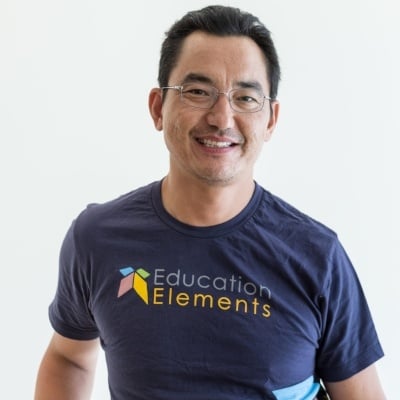I have led several companies but the workplace and teams today are uniquely more interconnected than they were in past organizations. So three years ago I decided I needed a new approach to how I organized our team and approach at Education Elements, the education consulting company I founded in 2010.
We wasted time in meetings where the focus was more on consensus building versus sharing information and catalyzing actions. People walked out of meetings feeling frustrated, because there was no more clarity after the meeting than before. Our decision-making was hindered both by the effectiveness of our meetings, but also by the effectiveness of our listening. We did not treat each team member as a sensor, so valuable insights were often lost and we did not always act as quickly to external shifts. We were a small company that was falling into some big company habits.
I knew I wanted us to be more nimble and being in Silicon Valley, we were surrounded by people talking about things like design thinking and Eric Ries’s The Lean Startup. I researched different approaches to organizations and management and came upon Frederic Laloux’s Reinventing Organizations and the concept of Teal Organizations. Teal Organizations seemed to point towards a meta layer ultimately reminding us that organizations and teams are made of people and natural organisms, which shouldn’t try to behave like industrial machines. I read General Stanley McChrystal’s, Team of Teams and Brian Robertson’s Holacracy to learn more about responsiveness. I ultimately decided to experiment with Holocracy, an organizational operating system - it seemed like the right mix of structure and flexibility while keeping in mind lessons learned from other organizations and approaches. Better yet, implementation was simple:
- We started and ended each meeting with check-ins. These protocols proved an effective way to engage every person in the room and provided us with helpful insights as to what was on their minds at the meeting’s start, as well as immediate feedback about how they felt before they left.
- We identified meeting facilitators. We opened the opportunity to take on this role to everyone in our company, and trained those who were interested by having them attend and observe all meetings, even if they were in different departments. Having these facilitators to moderate our meetings allowed for consistency and growth, and ultimately helped keep our sessions on track.
- We threw out our old organizational chart and created a new one utilizing Holaspirit, which helps organizations keep dynamically updating organization maps. The tool was important because it made it easier, but the mindset shift and the new view on how we organize ourselves was what mattered.
The key to becoming successfully “holocratic” is finding the aspects of Holacracy that work best for you and your organization - and letting these become the key drivers for change. From the start, we only implemented those that we felt would suit us best, and left other aspects unchanged. I wanted us to collaborate more effectively, make decisions better, and be more responsive. So I only focused on the practices that would help us do just that. These steps allowed us to improve decision-making and how work happened by reframing roles and responsibilities, and it enabled us to hear everyone clearer and, when needed, act faster.
The three-year journey has helped us to not only make ourselves a better organization, but also helped us develop empathy and some new skills. We moved to an organization where “safe to try” became the norm and innovation was more ingrained into the culture.
This revelation and our transformation also led me to look at organizations differently and reflect on how many of the practices we were succeeding with could be helpful for others, including schools and districts, looking to do the same. I have been using what I learned to write The NEW School Rules, which digs deeper into how organizations can re-think the way they operate and end up with radically different, and better, outcomes, as well as more satisfied employees, as a result. This journey has turned out to be more of a cycle than anything else - and in the process you, too, will find that we are all learning, growing, collaborating, deciding, and responding better to the world around us.




